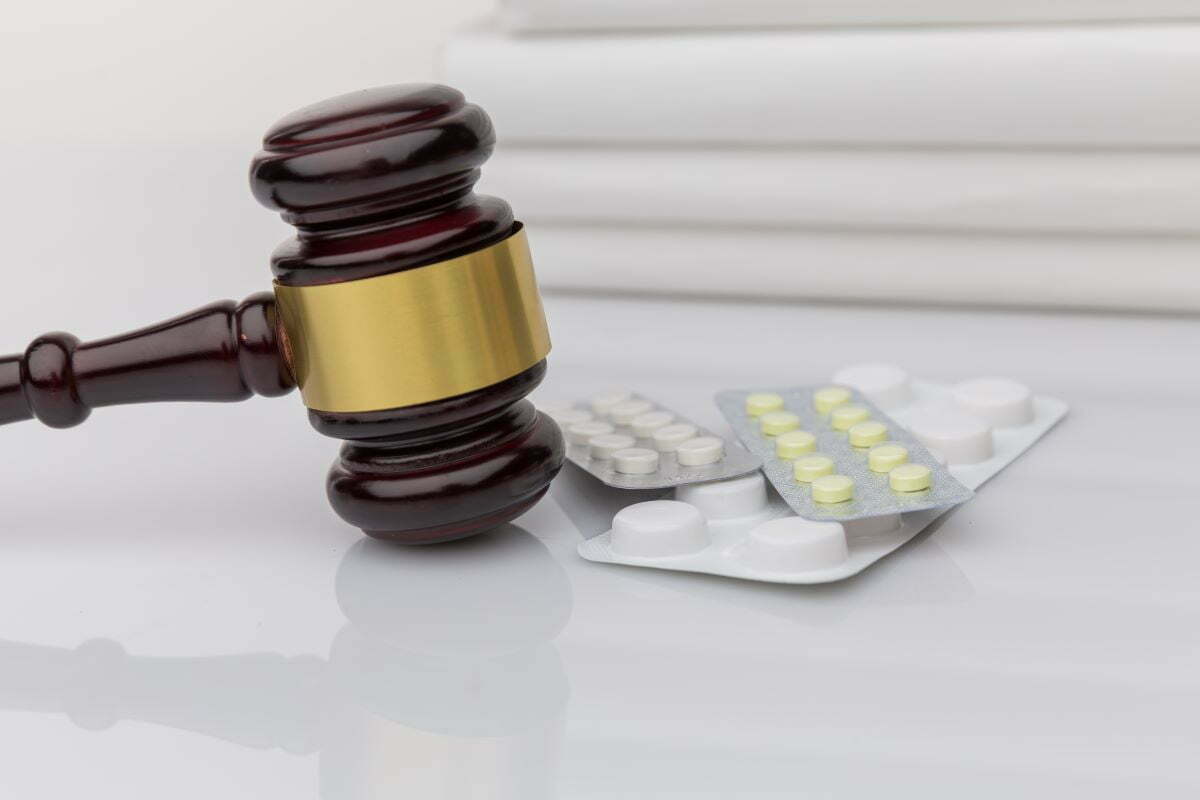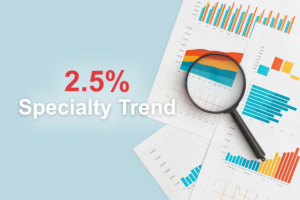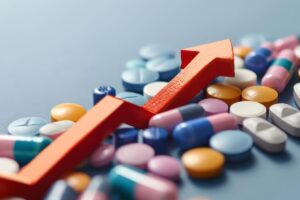In 2021, the U.S. healthcare system spent $603 billion on prescription drugs before rebates. While only 20% of the prescription drugs filled were brand-name drugs, they accounted for 80% of the overall prescription drug spend.1
Drug manufacturers are constantly working to research and develop new drug therapies. Patents protect their intellectual property to ensure a return on investment can be generated. Once patented, these brand-name drugs can hold off competition in the market, delaying other companies from creating cheaper, generic versions of the drug. Therefore, without competition, drug manufacturers can set their own prices, which are often costly and impact prescription drug spend for both plan sponsors and participants.
What Are Drug Patents and Exclusivity
The World Intellectual Property Organization defines a patent as, “An exclusive right granted for an invention, which is a product or a process that provides, in general, a new way of doing something, or offers a new technical solution to a problem.”2
A pharmaceutical patent can be obtained for a newly identified drug compound with an effective outcome proven by clinical trials. To receive a pharmaceutical patent, a drug manufacturer must submit a New Drug Application to the Food and Drug Administration (FDA). If approved, the patent grants property rights to the new molecule for 20 years. However, other factors affect the length of the patent. Once it finally hits the marketplace, the timeframe is generally closer to 7 to 12 years.3
Drug manufacturers may also have exclusivity once a drug is patented. This means they have exclusive rights to the manufacturing and distribution of the drug for a period of time. Therefore, no generic drug competition is allowed during the exclusivity period. Exclusivity periods vary based on what the drug is used for, its active ingredients, if it includes a new chemical, and more.4
The Effects of Drug Patents and Exclusivity
For drug manufacturers, many benefits come with patents. Drug patents:
- Show innovation
- Help fund research and development expenses
- Protect against competitors who could duplicate the manufacturing of a drug
- Attract investors and raise private equity financing which improves the overall economic growth of companies in the industry
- Contribute to roughly 80% of the overall revenue of a drug manufacturer5
Drug manufacturers benefit from maintaining market control. Some make slight edits to delivery procedures, dosages, and/or formulations to prolong their drug patents’ protection by granting another patent. This is known as evergreening. According to PharmaNews Intelligence, it is estimated that between 78% and 80% of new patent applications are not for new medicines.6
Combating the Prices of Patented Drugs
Reform may be needed to restrict high drug prices caused by drug patents. In 2021, President Joe Biden released an Executive Order calling on federal agencies to establish policies to promote the increase of generic and biosimilar competition. Soon after, both the Senate and FDA called for the United States Patent and Trademark Office (USPTO) to look into how it can better the patent system to limit drug monopolies. In 2022, the USPTO responded in a letter that summarized initiatives designed to improve patent procedures and address issues with patents being misused to delay competition.7
In the meantime, plan sponsors and patients continue to be stuck with paying the high costs for patented brand-name drugs. While some believe there is very little that can be done at the plan level to combat these prices, National CooperativeRx has found unique ways to ensure our members can control costs while still providing a valuable benefit to patients.
Our suite of clinical programs provides advanced clinical oversight to combat fraud, waste, and abuse in pharmacy benefit spend. We focus on utilization management to ensure the right members are receiving the correct medications with the most appropriate dosage. Additionally, we have a variety of formulary management options that guide patients to the most clinically appropriate and lowest-cost treatment options.
It is our responsibility to educate our members on the industry and guide them to the best options for their needs. That is why we are constantly monitoring the pharmaceutical pipeline for new therapies and determining which drugs bring the highest value. Our quarterly pipeline reports keep our members and partners up to date on the latest drugs coming to the market. The most recent report was a special edition on Humira’s Biosimilar Updates. To see what is happening in the pipeline with Humira’s exclusivity expiring, click here.
1. “Office of Issue Brief Science & Data Policy September 2022 – Aspe.hhs.gov.” Accessed January 17, 2023. https://aspe.hhs.gov/sites/default/files/documents/88c547c976e915fc31fe2c6903ac0bc9/sdp-trends-prescription-drug-spending.pdf.
2. “Patents.” WIPO – World Intellectual Property Organization. Accessed January 17, 2023. https://www.wipo.int/patents/en/.
3. “How Long Does a Drug Patent Last?” UpCounsel. Accessed January 17, 2023. https://www.upcounsel.com/how-long-does-a-drug-patent-last.
4. Center for Drug Evaluation and Research. “Frequently Asked Questions on Patents and Exclusivity.” U.S. Food and Drug Administration. FDA. Accessed January 17, 2023. https://www.fda.gov/drugs/development-approval-process-drugs/frequently-asked-questions-patents-and-exclusivity.
5. “Why Are Drug Patents Important: Everything You Need to Know.” UpCounsel. Accessed January 17, 2023. https://www.upcounsel.com/why-are-drug-patents-important.
6. PharmaNewsIntelligence. “How Pharmaceutical Patents Contribute to Increased Drug Costs.” PharmaNewsIntelligence, August 11, 2022. https://pharmanewsintel.com/features/how-pharmaceutical-patents-contribute-to-increased-drug-costs.
7. Poulos, Sabrina. USPTO Outlines New Initiatives Regarding Drug Pricing – Patent – United States. Goodwin Procter LLP, July 14, 2022. https://www.mondaq.com/unitedstates/patent/1211468/uspto-outlines-new-initiatives-regarding-drug-pricing-.




